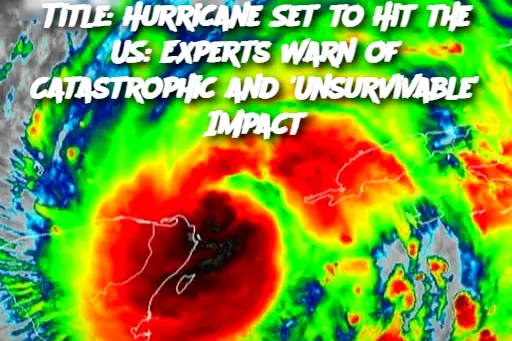-
Stay Informed: Continuously monitor updates from the National Hurricane Center (NHC) and local authorities. Weather conditions can change rapidly, and staying informed is crucial to making timely decisions.
-
Evacuation Plan: If you are in an evacuation zone, it is imperative to leave as soon as possible. Follow official evacuation routes and instructions to avoid dangerous roads that may become impassable due to debris, flooding, or other hazards.
-
Emergency Kit: Prepare an emergency supply kit that includes:
- Water (one gallon per person per day for at least three days)
- Non-perishable food
- Medications
- First-aid kit
- Flashlights and extra batteries
- Personal hygiene items and face masks
- Important documents (e.g., IDs, insurance papers)
- A portable phone charger
-
Protect Your Home: If evacuation is not possible, secure your home by boarding up windows, bringing in outdoor furniture, and reinforcing doors. Move to a small interior room, closet, or basement away from windows during the storm.
-
Stay Off the Roads: Once the storm hits, stay indoors and avoid traveling. Emergency vehicles need clear roads to respond to crises, and driving in hurricane conditions is extremely dangerous.
Serving and Storage Tips:
- Long-Term Supplies: Stock up on supplies well ahead of time, as stores may be closed or shelves may be emptied quickly when a hurricane is imminent.
- Use Caution With Generators: If using a generator for power, make sure it is placed outside to avoid carbon monoxide poisoning. Never run a generator in an enclosed space, including garages.
Variants:
- Storm Surge: Beyond the winds, the hurricane’s storm surge is expected to cause significant flooding along the coast. Coastal communities should prepare for a rise in sea levels that could overwhelm infrastructure and lead to severe property damage.
- Rainfall and Flooding: Heavy rainfall could lead to flash floods in inland areas, making evacuation routes dangerous. Residents are advised to stay vigilant even if they are not directly in the storm’s path.
FAQ:
Q: How can I tell if my area is in the evacuation zone? A: Local authorities will issue evacuation orders based on forecasts of where the storm will make landfall. Stay tuned to local news, government websites, and emergency alerts for the most accurate information.
Q: What should I do if I am unable to evacuate? A: If you are unable to leave, seek shelter in a sturdy, windowless room on the lowest level of your home. Keep your emergency supplies close, stay informed through a battery-powered radio or smartphone, and wait until authorities declare it safe to go outside.
Q: How can I help others in my community during a hurricane? A: Reach out to neighbors, especially elderly or vulnerable individuals, to ensure they are aware of the storm and have an evacuation or shelter plan. Offer assistance with transportation or supplies if possible.
Q: Is it safe to use social media during a hurricane? A: Yes, but it’s important to focus on trusted sources such as government agencies, emergency responders, and the National Weather Service for updates. Avoid spreading unverified rumors or misinformation.
Q: How can I minimize the impact of flooding? A: If you live in a flood-prone area, consider purchasing sandbags to create barriers around your home. Elevate important items off the ground, and avoid driving through flooded roads.
As hurricane season continues, it’s essential to prepare for extreme weather events that can have catastrophic consequences. This storm, with its unparalleled strength and potential for damage, underscores the importance of following safety protocols and staying informed. By planning ahead and acting quickly, we can minimize risks and ensure the safety of ourselves, our families, and our communities.
